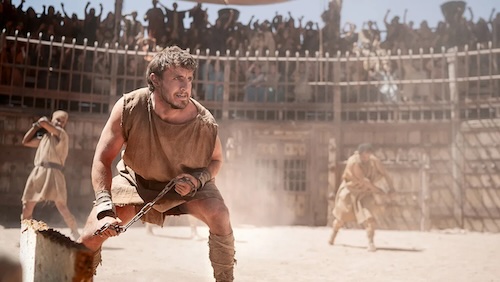
Gladiator II promises to be a feast for the senses when it rampages into Cineworld this November. Paul Mescal takes up Russell Crowe's mantle as free man turned slave Lucius Verus in Ridley Scott's blood-soaked and sweeping sequel to his Oscar-winning classic Gladiator (2000).
The sheer scale of the movie reinforces Scott's capacity for world-building, which is a reputation he's forged over more than 40 years. Here's why Gladiator II is so emblematic of Scott's richly immersive style.
1. Scott can plunge us into any timeline from the distant past to the distant future
Now 86 years old, Scott is not cowed by the intimidating prospect of recreating Ancient Rome on the big screen. Gladiator II ranges from the feral, sand-streaked violence of the Colosseum, where Paul Mescal's Lucius is compelled to fight to the death, to the gilded interiors of the Emperors' quarters without missing a beat, smoothly examining a 'bread and circus' society that is in a state of flux.
It's been so ever since the death of Maximus Decimus Meridius (Russell Crowe) in Gladiator some 20 years earlier. The physicality of the baying, entertainment-seeking lower classes vies with the decadence of the film's Caligula-esque Emperors Geta and Caracalla, played with mad intensity by Joseph Quinn and Fred Hechinger. The environment feels lived-in and palpable, rife with the potential for both backstabbing and redemption as the story encompasses characters both noble (Lucius) and scheming (Denzel Washington's showboating slave-owner Maximus).
This is what we've come to expect from Scott. The worlds he creates aren't simply meant to be looked at but breathed in, from the painterly nature of the Napoleonic epic The Duellists (1977), his cinematic debut, to the grimly mechanical, futuristic states of his sci-fi masterpieces Alien (1979) and Blade Runner (1982). We not only believe in the landscapes he creates but we feel we're walking around in them as a result of lighting, blocking, staging, production design and myriad other elements.
Gladiator II builds on the impressively immersive qualities of both the original Gladiator (2000) and another Scott historical epic Kingdom of Heaven (2005), radiating a genuine sense of passion for a time gone by. That a movie like Gladiator II allows us to escape our humdrum reality for two and a half hours, evoking, albeit with inaccuracies, a sense of how we've developed as a species and a society, is the greatest testament to Scott's capacity to build on-screen worlds.
2. Scott is never lacking in a sense of epic scale
Just one look at the Colosseum in Gladiator II and we forget it's been 24 years since the original Gladiator bestrode our screens. Scott clearly hasn't lost a step as a filmmaker and indeed he's now evolved his sense of scale. The Colosseum in the original film was famously bulked out with CGI, which was used to build and replicate the structure's uppermost layers.
For the sequel, Scott employed a small army to build a real Colosseum and a 1:1 scale model, which combined with the advance in computer effects over the last 24 years, now allows a smoother transition between the worlds of the practical and the ephemeral. Thousands of extras were employed during the production and the budget has dwarfed that of the first film, grossing between $250 and $300 million.
The increased budget and ambition allow Scott to play around with our expectations as battles now include raging baboons and violent ship conflicts in a Colosseum filled with water. Little wonder that Denzel Washington, who first worked with Scott on 2007's American Gangster, describes it as, "The biggest film I've ever been on... Cecil B. DeMille on steroids". It's worth noting again that Scott is now pushing into his 90s and still pushing the boundaries of cinematic reality, reclaiming worlds of ancient antiquity from the sands of time.
3. Intimate details like costumes and make-up are just as important as the big picture
It's tempting to see Scott as a filmmaker who thinks entirely on a large canvas, but Gladiator II reinforces his strength in crafting moments of real intimacy. These come primarily in the quiet, character-led scenes between Lucius and Macrinus, and also Lucius and his mother Lucilla (played by a returning Connie Nielsen).
These relatively more placid, dialogue-driven sequences emphasise oft-overlooked details like Janty Yates' finely embroidered costumes (an Oscar winner for the original Gladiator), which help imbue the actors with a palpable sense of the characters they're playing. Washington, in particular, clearly relishes the flowing robes of the Machiavellian Macrinus, flicking his sleeves out in a disdainful yet subtly commanding manner every time he gets to his feet.
Scott has always been attuned to these smaller moments, despite accusations to the fore. From the moments of philosophical solitude in Blade Runner to the sisters-in-arms dynamic of the acclaimed Thelma & Louise (1991) to the plangent Maximus pining for his deceased wife and child in the original Gladiator, Scott locates these moments of emotional realism and thereby helps anchor the audience to the worlds he's creating.
4. Sound design and music are a key factor in the worlds he creates
It's one thing to look at a film but it's another thing to hear it. A great director will establish a holistic connection between the eyes and the ears, and Scott has always excelled in this area. One need only think of Alien, which showcased the synergy between the roar of the space tug Nostromo and the eerie refrains of Jerry Goldsmith's score – everything about the aural nature of that film conveyed a sense of journeying into the unknown.
In Gladiator II, Scott is attentive to both objective sounds like the clanging of swords and shields, and the illusory, emotional overtures of the score by Harry Gregson Williams. A desolate breath of wind sweeping through the Colosseum embodies the devastating, deathly cost of human conflict and destruction while the additional layer of a melancholic symphony orchestra embodies everything that Lucius is fighting to uphold, particularly the legacy of his late father, Maximus.
Gregson Williams has a complex task weaving his original melodies around the piercing Hans Zimmer themes from the original film, which was co-composed with vocalist Lisa Gerrard. The interweaving of past and present in the music is offset by the roaring immediacy of the sound effects in the battle scenes, giving us a profound sense of past, present and future all intermingling.
5. He consistently casts the right actors to make us believe in the drama
Gladiator II boasts great actors across the board from Normal People sensation Paul Mescal to The Last Of Us star Pedro Pascal as the conquering yet conflicted General Acacius. Even so, it's the scene-stealing Denzel Washington who's winning most of the plaudits and it's easy to see why. The veteran actor palpably relishes the role of a slow-burn traitor who plans to use his new slave Lucius as a means to usurp the incumbent Emperors – the part is positively Iago-esque in its scope.
Washington's casting embodies Scott's underrated tendency to cast exactly the right actors for his films. Scott's instincts when casting Sigourney Weaver in Alien resulted in one of the greatest icons of science fiction while Rutger Hauer's casting as the calculating replicant Roy Batty in Gladiator imbued a potentially two-dimensional role with unexpected layers of melancholy. Likewise, Geena Davis and Susan Sarandon showcased pitch-perfect chemistry in Thelma & Louise that propelled the movie to classic status.
The original Gladiator won an Oscar for Russell Crowe while Matt Damon's everyman likeability helped ground the fantastical conceit of The Martian (2015). Scott not only knows how to build worlds, but he also knows how to populate them.
Gladiator II is released at Cineworld on November 15th. Remember, what we see on the big screen echoes in eternity.

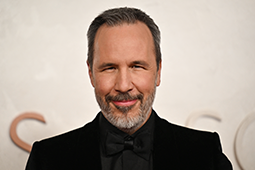
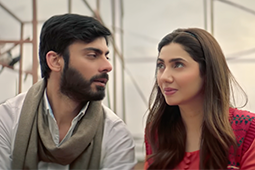


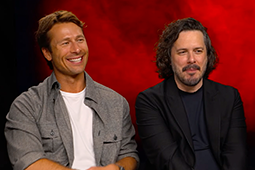
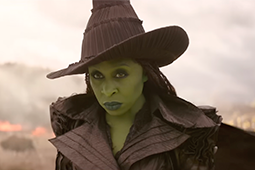
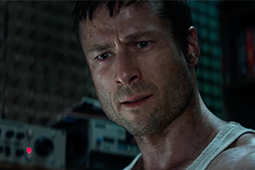




.jpg)
.png)






